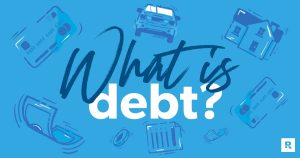Key takeaways
- For a startup that doesn’t have a business credit history, lenders will look at the entrepreneur’s personal credit history to gauge business risk.
- Once your business has been running for a while, you can generate a business credit report for lenders.
- A business credit report will gauge a firm’s creditworthiness by taking into account factors such as its payment history, sales and assets.
- Once you’ve established a business credit history, you should maintain a low level of debt that’ll allow you to access additional financing sources such as business credit cards.
For many entrepreneurs, bringing a business to fruition is no small financial feat. According to 2021 research conducted by the retail platform Shopify, small business owners spend an average of $40,000 in their first year. That expense ramps up to $60,000 when the owner has between one and four employees.
However, some companies require an even larger amount of capital to launch. For example, you may want to open a restaurant and need to purchase all the equipment and fixtures. Or maybe you want to buy, renovate and flip property. Whatever the case, if you don’t have the cash on hand or investors willing to provide the money, borrowing may be the best option to explore. If so, you’ll need your credit to be especially attractive to lenders.
Here’s how to prepare your credit for your big business adventure.
Prepare your personal credit
If this is your first foray into business borrowing, you will not have a business credit report. That means the information that appears on your consumer credit report will be used to determine risk.
Because lenders assume more risk with larger loans than they do with smaller loans, it will be especially important to prove that you are a regular and responsible borrower.
Pull all three of your credit reporting files from TransUnion, Equifax and Experian. The best place to get them is from AnnualCreditReport.com, which provides free weekly access to each of your reports. Read your credit reports carefully. Everything should be accurate and positive. If you see negative information that is incorrect, file a dispute with the credit reporting agency. They have 30 days to investigate your claim, so don’t delay if you’ll be applying for credit products soon.
You will want to have plenty of positive information on your reports, too. A thin credit file, which means you have few or no listed accounts, does you no favors. A lender won’t know what kind of risk they’ll take with you as a borrower.
What’s most important to lenders, according to Everett Sands, CEO of Lendistry, is that you have a demonstrated pattern of paying debts in full on past obligations. Without that, you’ll need a clear and reasonable explanation for past credit issues.
Factors such as past revenue that back your ability to repay, marketing and sales data that support your future projections and contracts in execution will help qualify you for a loan, according to Sands.
“The most important thing to a lender is the borrower’s ability to repay the loan,” Sands says. “The stronger the applicant’s credit profile and financial information… the more likely they are to receive the loan.”
So if you have dormant credit cards, use them to make purchases and then pay the bills on time and in full. No accounts? Open one or two credit cards and use them the same way. Credit building takes time, though, so take this action well in advance.
You’ll get a FICO score after at least one account is open and active for six months, though a VantageScore can be generated in a month or two after one account is on your file. Both scoring systems measure your creditworthiness based on the data on your credit files. The numbers range from 300 to 850, and you’re more apt to qualify for a large loan when your scores are in the mid-700s and higher.
Understand your business credit
You won’t have a business credit report until you have started your company and creditors and vendors have supplied information to the business credit reporting agencies. These reports are similar to your consumer files, but are more inclusive, complex and specific to your company’s financial health.
The most common business credit reports are developed by Dun & Bradstreet, Experian Business and Equifax Business. Your business credit reports will contain the information necessary for a lender to make a wise decision about the health of your business and your credit history. For example, it will show your record of paying suppliers and repaying lenders, your current bank balances and activity, the company’s assets, inventory and sales. If there was legal action, it would show any liens, judgments and bankruptcies.
As with lenders gauging your consumer credit reports, the most important factor will be your payment history. If you’ve borrowed and paid on time and according to the terms of the contract, issuers can see you’re a responsible person to do business with. The longer you have had and used credit products this way, the greater confidence a lender will have in you as a business owner.
In addition to that, Sands says, your past revenue or future revenue forecasts will be assessed, as will your ability to show experience in the industry or business you’re in.
Develop healthy ratios and relationships
You will also need to demonstrate that you have enough money coming in to manage the payments on the credit you are looking for.
A business that you’ve had for a long time will help you qualify for a large loan, but without that, a strong revenue base plus collateral will definitely put you in a positive position. What will get in the way? Debt. If you already owe a lot of money, those monthly payments will erode the amount you can borrow from the new lender.
The lender will assess your debt-to-income ratio (DTI) when deciding whether you qualify for a loan. Your DTI compares the total of your gross monthly earnings to your monthly creditor payments. So if 40 percent of your gross monthly profits is already promised to creditors, your DTI is 40 percent. This ratio helps lenders know if you can afford to take on the payment. The lower your DTI the better, so before applying, you may want to pay off as much of your current round of financial obligations as you can first.
There aren’t always hard-and-fast rules regarding eligibility for extra large loans, though, according to Josh DeShong, founder of Dallas-based property investment company, Trelly. It’s often about forming strong relationships with the right financial institution.
“Regional banks and credit unions have a tendency to measure each investor differently,” DeShong says. “My credit score could go to 500 and my bank will still loan me money.”
Another Texas-based real estate investor, David Phelps, of Freedom Founders, stresses the importance of assets when approaching banks for huge loans. For example, a million dollar loan may be achievable when you have $15 million in assets. If you don’t have that, Phelps says, “the debt-to-income ratio better be solid enough for the lender to say, ‘Okay, the risk is good.’”
Pursue funds from the right sources
Ready to start applying? There are a few types of capital sources. Chief among them:
- Small business cards. Small-business credit cards tend to have expansive credit limits, especially when compared to personal credit cards. If you get a charge card, there is no preset limit, so you can charge almost anything, but you do have to pay the bill in full in 30 days. Some cards have installment plans, such as the American Express® Business Gold Card that has a “pay over time” option for eligible purchases.
- Business lines of credit (LOC). These flexible loans work like a credit card. You can borrow up to a limit during the “draw period,” then make at least interest only payments in that time frame. If there is still a balance remaining at the end of the draw period, you would repay the debt as you would an installment loan. The lender will review your credit score, annual revenue and the length of time you’ve been in business (six months is usually the minimum) to determine if you qualify.
- Business loans. You can get business loans from many different sources, such as Small Business Administration, conventional banks, credit unions, online lenders and microlenders. With a business loan, you borrow a fixed amount and send steady monthly payments until the loan is paid off. The biggest loans with the lowest interest rates will be available to you if you have been in business for a couple of years and have good credit.
Once you have the credit products, use them to your advantage. Leveraging a bank’s deep assets is a great strategy, but that’s just the beginning. Because all that borrowing and repaying activity will be landing on your credit reports, only take out the amount you can repay. Then more, larger and better credit cards and loans will be available to you and your growing business.
The bottom line
In the end, remember that banks and other credit providers want to lend money to qualified borrowers. It’s part of their business model, after all. So take action now to become the most appealing borrower you can be. As a startup, you may have to begin with low limit cards and small loans and build your creditworthiness up, but with time and a strategic approach, higher limits and loans will be within reach.
Read the full article here
















